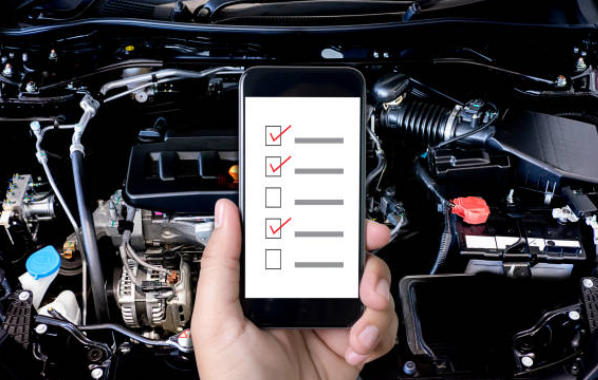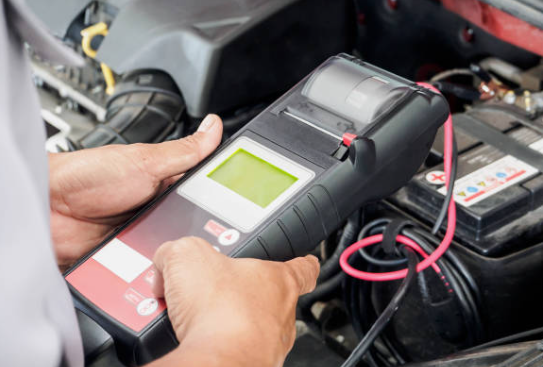Need the right battery type? We’ve got you covered! Whether it’s for your car, phone, or any device, we’ll guide you through the selection process. Consider factors like power requirements, size, weight, lifespan, and durability to ensure a perfect match that lasts. And if you’re wondering, “Does autozone change batteries?” — we’ll address that too, providing a comprehensive battery solution.
Types Of Install Batteries
When choosing the right battery type, you have several options to consider. Lead Acid Batteries are a popular choice for applications that require high power output and long life.

Lithium-ion batteries are known for their high energy density and lightweight design, making them ideal for portable devices.
Nickel-cadmium batteries are reliable and can withstand extreme temperatures, making them suitable for outdoor use.
Alkaline Batteries are affordable and widely available, making them a common choice for everyday devices.
Lead Acid Batteries
With their large, rectangular shape and heavy weight, lead acid batteries are a common choice for applications requiring a high energy capacity. These batteries are widely used in vehicles such as cars, trucks, and motorcycles and in backup power systems for homes and businesses.
Lithium-Lon Batteries
Lithium-ion batteries are an excellent choice if you’re looking for a battery that offers high energy density and long-lasting power. These batteries have become incredibly popular in recent years due to their numerous advantages.
Nickel-Cadmium Batteries
Nickel-cadmium batteries, known as NiCd batteries, offer a reliable and durable power source for various applications. These batteries have been around for decades and have proven to be a popular choice for many consumers.
One of the critical advantages of NiCd batteries is their ability to provide a consistent power level throughout their discharge cycle. This means you can rely on NiCd batteries to deliver steady power to your devices, allowing them to perform at their best for extended periods.
Alkaline Batteries
Alkaline batteries, with their long-lasting power and wide temperature tolerance, can be a reliable companion for all your electronic devices. These batteries are known for providing consistent power output, making them ideal for high-drain devices such as digital cameras, portable gaming consoles, and remote-controlled toys. Whether capturing precious moments or enjoying an immersive gaming experience, alkaline batteries will ensure that your devices stay powered up for more extended periods, allowing you to make the most of your electronic gadgets.
Continue Your Research: Preventive Measures for Battery Issues
Factors To Consider When Choosing A Battery
When choosing a battery, there are several factors you should consider.

First, consider the battery’s capacity, which determines how long it will last before needing to be recharged.
Next, think about the size of the battery, as it needs to fit within the device you’re using.
Lastly, consider the battery’s cost, cycle life, and rechargeability. These factors will determine the long-term value and convenience of using it.
Capacity
To maximize your device’s performance, you’ll need a battery with sufficient capacity to handle your usage demands. Capacity refers to the energy storage capability of a battery and is measured in milliampere-hours (mAh). The higher the capacity, the longer your battery will last before recharging.
Size
Now that you understand the importance of battery capacity let’s move on to the next factor to consider when choosing the right battery type: size.
Regarding battery size, it’s crucial to find one that fits your needs. A battery that is too big does not fit in the device you’re using it for, while a battery that is too small provides enough power for your intended usage.
Cost
Consider your budget and ensure the battery’s cost aligns with your financial goals, allowing you to save money without compromising on quality or performance.
When choosing the correct battery type, it’s essential to consider the initial cost and the long-term expenses. While battery types have a higher upfront cost, they provide better performance and last longer, ultimately saving you money in the long run. Cheaper battery options seem more affordable initially, but they do not offer the same level of efficiency and durability.
Cycle Life
Think about how many times you want your battery to be able to charge and discharge throughout its lifespan. This is what cycle life refers to when it comes to batteries.
Cycle life is defined as the number of times a battery can be charged and discharged before it starts to degrade significantly. Different battery types have different cycle life capabilities. For example, lithium-ion batteries, which are commonly used in smartphones and laptops, Have a cycle life of around 300-500 cycles. Lead-acid batteries, commonly used in automotive applications, have a cycle life of around 200-300 cycles.
Continue Exploring: Battery Size and Compatibility Tips
Rechargeability
To ensure your battery lasts longer, it’s crucial to select a battery that can be charged and discharged multiple times without significant degradation. This is where rechargeability comes into play.
Rechargeable batteries, also known as secondary batteries, are designed to be repeatedly charged and discharged without losing their capacity to store energy. Unlike disposable batteries, which are meant to be used once and then discarded, rechargeable batteries can be recharged hundreds or even thousands of times, making them a cost-effective and environmentally friendly choice.
Potential Applications For Battery Types
When considering potential applications for battery types, lead acid batteries are commonly used in automotive applications due to their high power output.

Lithium-ion batteries are popular for portable devices like smartphones and laptops thanks to their lightweight and high energy density.
Nickel-cadmium batteries are used in cordless power tools and emergency backup systems due to their long cycle life and ability to withstand extreme temperatures.
Lastly, alkaline batteries are commonly found in household devices such as remote controls and flashlights due to their affordability and long shelf life.
Lead Acid Batteries
Consider using lead-acid batteries for applications that require high power output and deep cycling capabilities. Lead acid batteries are known for their ability to deliver a large amount of power in a short period, making them ideal for applications such as starting engines or powering electric vehicles.
Lithium-Lon Batteries
Are you looking for a battery with high energy density and long-lasting power? Lithium-ion batteries are the way to go. These batteries have become increasingly popular due to their numerous advantages.
Nickel-Cadmium Batteries
Now that you understand the basics of Lithium-Ion batteries let’s dive into another popular option: Nickel-Cadmium batteries. These batteries have been around for a while and have proven reliable and versatile.
If you’re looking for a battery that can handle high-drain devices and provide a steady flow of power, then Nickel-Cadmium batteries are the right choice.
Alkaline Batteries
If you want a reliable and long-lasting power source, alkaline batteries are an excellent option for you. These batteries are known for their high energy density, which means they can store a large amount of energy in a compact size. This makes them perfect for devices that require a steady and consistent power supply, such as remote controls, flashlights, and portable audio devices.
Conclusion
In conclusion, choosing the right battery type requires considering specific applications, cost, lifespan, and environmental impact. Tailor your choice to your needs, whether for electronics, automotive, or renewable energy. Research and understanding ensure a wise investment. Take your time, make the right choice, and enjoy the benefits of the perfect battery type.
